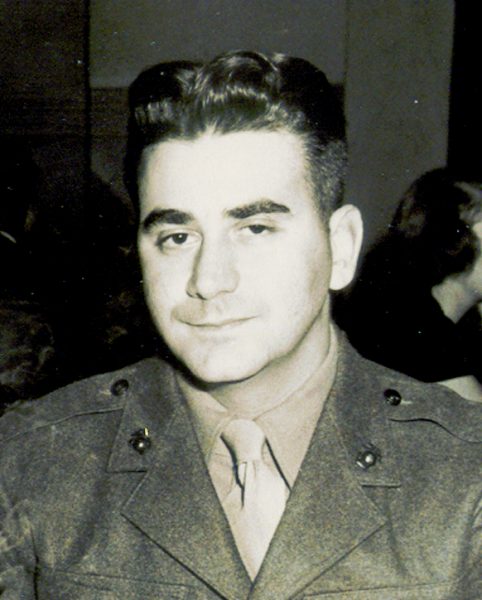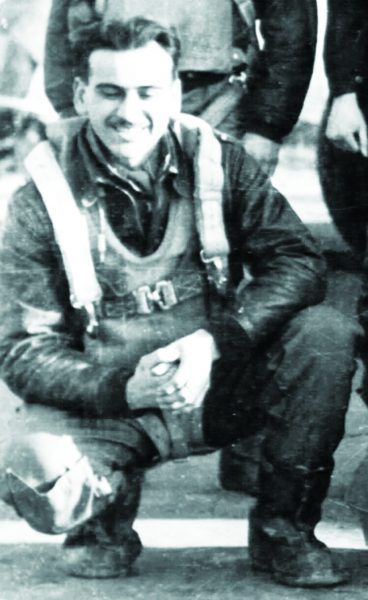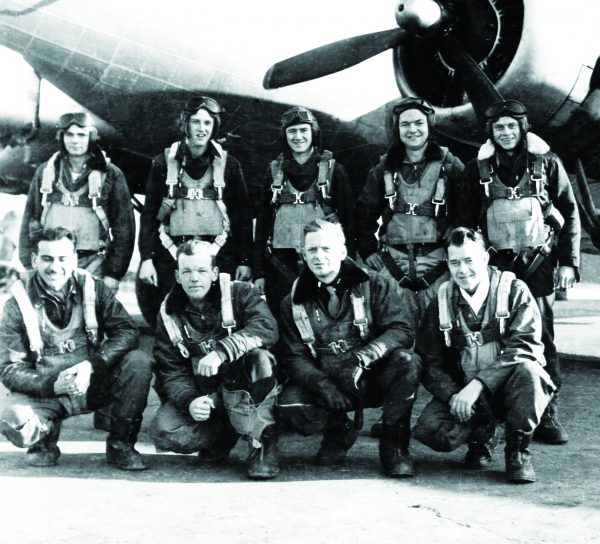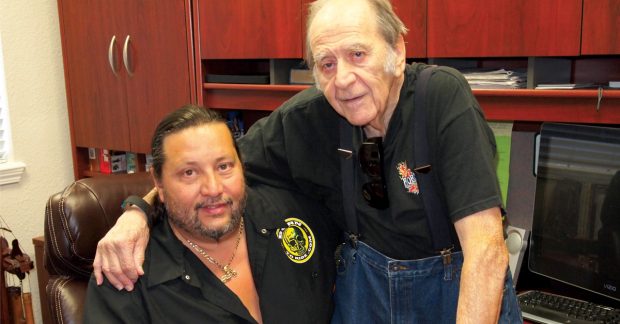Honoring Their Courage and Sacrifice, Happy Father’s Day
HAPPY FATHER’S DAY
June is here and let’s not forget Dad. Father’s Day is a day honoring fathers, celebrated on various days in many places around the world. It complements Mother’s Day. Happy Father’s Day to all the father’s reading this ad and Happy Father’s Day to all the mother’s reading this if you are a sole parent, mom and a dad of the family. Grandfathers, step-dads, uncles, brothers and sisters, you all deserve to be noted for what you do to be a figure in a child’s life. If dads not there someone who steps in as a fatherly figure. As the originator, we have only one father but it’s up to life to keep it all together, life, family, growing up in a household that’s strong and loving.

Happy Father’s Day to my dad!
A Marine and NYC Police Officer for 28 years, thank you for everything you’ve done for me in my life. I admire you for who you are and how you’ve always provided for the family. I love the way you loved your grandchildren and I’m proud they loved you back! To anyone reading this, call your dad and tell him Happy Father’s Day. If you’re not speaking, now is the time to start speaking to your father again.

My Uncle “Gee” was my dad’s father figure in his life for many years because his father worked many hours. He came from Italy and worked with marble but then later became ill and couldn’t do much with my dad. That’s when Uncle “Gee” stepped in and helped my dad in life as a father figure. So in this month of June, as a special Father’s Day tribute, we would like to honor my Uncle “Gee” Fidel Galletti who was a real WWII war hero pilot who flew B-17s. Most of all, he was my dad’s hero. This story is courtesy of The 390th Memorial Museum and my cousin, Marie Galletti Mitchell.
Ron Galletti
Honoring Their Courage and Sacrifice

Galletti Crew #95 (lower left ) Pilot – Fidel Galletti Co-pilot – William Spencer Top Turret – Eduard H. Daly Radioman – John Dudar R. Waist Gunner – Franklin Mesmer L. Waist Gunner – Laverne Dillow Ball Gunner – Virgil Burton
As Marie Galletti Mitchell and I corresponded regarding her story in the Sq. J, I found myself reflecting on how I enjoy talking with and writing to our descendants. They are special people … people who realize the importance of what our 390th did during WWII. Allow me to quote from one of Marie’s letters:
“What a group of good-looking, virile young men in Dad’s crew! Dad is first on the left in the front row. Laverne Dillow was killed in action. What a waste of life it was for him to have died so young! When Dillow went missing, his mother wrote to my mother to ask for news of her son. My mother has kept that letter in her wartime scrapbook ever since. Now that I’ve gotten older, I realize how many years and how many of life’s chapters young men like Dillow have missed.
So true … and today we honor those living and we memorialize those who have passed on to their reward. Heroes all … and we hope that this story adds yet another chapter to their lives … let it be so!
THE WARSAW AIRDROP OF 1944
On September 1, 1939, Nazi tanks rolled into Poland and started World War II. By September 18, 1944, the Polish resistance, which had bravely fought Hitler’s military might for five long years, was trapped in Warsaw with food, ammunition and other supplies running dangerously low.
The Poles called upon the Allies to provide supplies by airdrop. The Allies agreed, and airmen of the 390th, along with the 95th and 100th, were called upon to replenish the patriots of Warsaw with the supplies they desperately needed.
There was a catch, however. Warsaw is situated west of the Vistula River from Russia, and the Soviets had an unstated plan: Joseph Stalin wanted to weaken Poland in order that Russia could add this formerly sovereign nation to its empire once WWII was over. So while Stalin orally agreed to the Polish Airdrop, he kept delaying it by refusing to allow Allied planes to land on Soviet soil. (At that time, B-17s could not carry enough fuel to fly from England to Poland round trip.) Meanwhile, the Poles were getting weaker, and thousands died fighting Nazi soldiers on the streets of Warsaw. Finally, in September 1944, Stalin relented, giving the Allies permission to land about one hundred B-17s at some makeshift airfields in Russia.
On September 18, 1944, my father, First Lieutenant Fidel Galletti, along with his crew of eight men, climbed into their Flying Fortress to complete their 23rd mission of WWII. These airmen would fly for 10 hours that day to provide the Poles with the supplies they desperately needed.
My father’s log for that day reads, “We were to drop supplies to the Polish partisans holding parts of the city. Load was 10 containers and 2,800 gallons topped off. Bombing altitude was to be 14,000 feet. We ran into weather about 50 miles west of target and did several 360s trying to get over it. Colonel Tuesdale [command pilot of the lead plane] gave up trying to get on top and decided to go under as the base of clouds was at 12,000 feet. We got to the IP [Initial Point] and started on the run when fighters hit us. We were flying 565 #2 in the high of the high and out of position as they hit us. They came out of the clouds, and the tail, waist and ball opened up on them. Nine of them attacked from six o’clock level, and Rogers [tailgunner] had the best shot at them. He got the fourth coming in. Two 20 mm shells hit in the cockpit alongside of Spencer [co-pilot], and the oxygen started burning.”
Behind the pilot and co-pilot were two oxygen tanks. Flak from the German ammunition pierced both tanks, setting the highly volatile gas into a blaze which quickly spread throughout the cabin. The co-pilot, William Spencer, found himself sitting next to a three-foot hole in the side of the plane, with oxygen burning all around him. His only option was to jump from his seat, through the hatch and into the nose. Before he leapt from the cockpit, he used the interphone to order the crew to bail out.
At the same time, my father pulled away from the formation so that his plane, if it went out of control, would not bring down any other B-17s. He then set up the autopilot and hit the alarm bell. Both my father and the co-pilot were unaware that the fire had eaten through the communication lines, rendering it impossible for the crew to hear the orders to bail out of the crippled aircraft. Meanwhile, the interior of the airplane continued to burn, and the plane was filling with smoke. The airmen, while still able to breathe through oxygen masks, were unable to see through the dense smoke. The crew would have to act quickly if they were to save their lives and those of the Polish people they had flown so far to help.
Top Turret Gunner Eduard H. Daly, reacting quickly to a five-foot hole and a fire in the waist of the plane, grabbed a fire extinguisher, put out the fire in the rear of the cockpit, then passed the fire extinguisher to my father. My father worked on putting out the fire up front, all the while knowing that if any flak were to nick the nearby primer fuel line, the plane would explode. The primer, next to the punctured oxygen tanks, was constantly charged with gasoline. Whenever fighter planes and ground antiaircraft artillery hit a plane, shrapnel can boomerang around inside the aircraft and hit anything or anybody in it, including, of course, the primer line. Fortunately, once the fires were extinguished, the worst was over. The primer was never nicked, and no one but the pilot sustained even minor wounds.
However, danger still threatened the aircraft and its crew. The right tail elevator, necessary to stabilize the aircraft, had been almost torn off, and the cables to the tail section were nearly severed. One of the duties of a pilot is to keep his plane stable, but the damaged tail elevator pulled against my father, physically moving him back and forth as he tried to control the aircraft. In effect, the damaged tail was working against him for control of the plane.
In addition, my father was concerned that the torn tail cables, which had been shredded into wires, would get caught in the pulleys through which they threaded on their way from the control stick to the tail. Fortunately, this was not the case and finally, almost miraculously, after what must have seemed like hours of German attack, the Flying Fortress set down as scheduled on an improvised landing field in Mirograd, Russia.
In spite of fire and the damage to the plane, Bombardier Harry Evje had been able to drop the supplies on target, thus fulfilling mission #23 of my father’s crew: to assist the Polish dissidents in resisting the Nazi army.
In August 2005, a CNN documentary, “Warsaw Rising,” filmed from Warsaw during the airdrop, shows the B-17s approaching the city. They looked so heroic as they flew into the rescue! In the words of narrator David Ensor, “Suddenly, in the sky – a miracle!”
In the same documentary, Nina Januszowska Thiessen, a Polish underground courier, recalls of the airdrop:
That was the most wonderful picture when the American planes came. They were very, very high, so you didn’t see anything; you just heard the mmmm [sounds] of the heavy bombers. Then, all of a sudden, there was –like flowers. The parachutes were multi-colored, you know. And those multicolored flowers brought hope that Warsaw would live another day.
Over 2,500 years ago, Herodotus, “The Father of Western History,” declared that the purpose of written history was to memorialize glorious deeds. The Polish Airdrop of 1944 is one of modern history’s glorious deeds. America can be proud that the crew of B-17 #565, along with hundreds of other young American airmen, bravely risked their lives to take part in this gallant operation.

